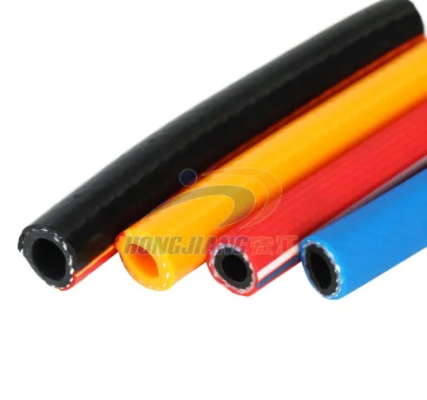How do I choose the right bulk air hose for my application?
Introduction
When it comes to selecting a bulk air hose for your specific application, several factors need to be considered. Choosing the right hose is crucial to ensure optimal performance, efficiency, and safety. In this article, we will discuss important considerations that will help you make an informed decision and select the most suitable bulk air hose for your needs.
Determine the Application Requirements
The first step in choosing the right bulk air hose is to understand the specific requirements of your application. Consider the operating pressure, temperature range, and the type of air or gas that will be flowing through the hose. Identifying these parameters will help narrow down the options and ensure compatibility with your intended use.
Assess Hose Material and Construction
Bulk air hoses are available in a variety of materials, such as rubber, PVC (polyvinyl chloride), polyurethane, or hybrid blends. Each material has its own set of properties and advantages. Rubber hoses are known for their durability and resistance to abrasion, while PVC hoses are lightweight and flexible. Polyurethane hoses offer excellent flexibility and resistance to kinks. Consider the specific requirements of your application and choose a hose material that best suits your needs.
Additionally, evaluate the construction of the hose. Look for reinforcement layers, such as braided or spiral reinforcements, which provide added strength and durability. The construction should be capable of withstanding the pressure and environmental conditions of your application.
Select the Right Hose Diameter
The diameter of the bulk air hose plays a crucial role in determining the flow rate and pressure drop. A larger diameter allows for increased airflow, while a smaller diameter may be suitable for applications with lower airflow requirements. Consider the volume of air or gas required for your application and choose a hose diameter that allows for optimal performance without excessive pressure drop.
Consider Temperature and Environmental Factors
Take into account the temperature range and environmental conditions in which the bulk air hose will be used. Some hoses are specifically designed to withstand extreme temperatures, while others may be more suitable for moderate climate conditions. Additionally, consider factors such as exposure to chemicals, UV radiation, or abrasive materials. Choosing a hose with the appropriate temperature and environmental resistance will ensure longevity and reliability in your specific application.
Evaluate Pressure Rating and Safety Standards
The pressure rating of the bulk air hose is a crucial factor in ensuring safe and efficient operation. It is essential to select a hose that can handle the maximum operating pressure of your system. Consider any potential pressure spikes or variations in your application and choose a hose with an appropriate safety margin.
Additionally, check if the hose meets relevant safety standards and certifications, such as those set by regulatory bodies like the Occupational Safety and Health Administration (OSHA) or industry-specific standards. Compliance with these standards ensures the hose's reliability and adherence to safety requirements.
Assess Flexibility and Bend Radius
Evaluate the flexibility and bend radius of the bulk air hose, particularly if your application requires maneuverability or routing in tight spaces. A hose with good flexibility and a smaller bend radius will be easier to handle, install, and navigate through various obstacles. However, keep in mind that excessive bending can lead to premature wear and affect the hose's performance, so strike a balance between flexibility and durability.
Consider Longevity and Maintenance
Investigate the expected lifespan of the bulk air hose and the maintenance requirements associated with it. Some hoses may require periodic inspections, cleaning, or lubrication to maintain optimal performance. Consider factors such as ease of maintenance, availability of spare parts, and the overall cost of ownership.
Conclusion
Choosing the right bulk air hose for your application is a critical decision that impacts performance, efficiency, and safety. By considering factors such as application requirements, hose material, diameter, temperature resistance, pressure rating, safety standards, flexibility, and maintenance, you can make an informed choice. Selecting a hose that aligns with your specific needs will ensure reliable operation, enhance productivity, and contribute to a safer working environment.
335
0
0


Comments
All Comments (0)